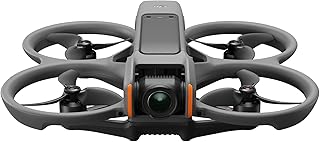DJI Drone Laws and Regulations: What You Need to Know
Flying a DJI drone, or any drone for that matter, is subject to a complex web of regulations and laws. These vary widely by country and even by region within a country. Here's a breakdown of what you need to know:
General Guidelines:
* Know the law: Always check the latest regulations in your specific location before flying. The FAA in the US, Transport Canada in Canada, and the CAA in the UK are just a few examples of governing bodies you need to be familiar with.
* Register your drone: Many countries require drone registration, often with a unique identifier. This is a crucial step for legal operation.
* Respect airspace: Drones are not allowed to fly in restricted airspace, including near airports, military bases, and other sensitive locations. Apps like the DJI Fly app or B4UFLY can help you identify these areas.
* Maintain a safe distance: Keep your drone a safe distance from people and property. It's generally recommended to fly at least 50 feet away from buildings, people, and vehicles.
* Fly responsibly: Use common sense and avoid flying in dangerous or disruptive situations. Don't fly over crowds, emergency scenes, or in a way that could endanger others.
* Be aware of privacy laws: Drone footage can capture images of people and property. Be mindful of privacy laws and avoid filming people without their consent.
Specific Considerations:
* Commercial vs. recreational use: Regulations often differ for commercial and recreational drone use. Commercial operations require additional licenses and permits.
* Operating altitude: There are limitations on how high you can fly a drone. In the US, the maximum altitude for recreational flying is 400 feet.
* Visual Line of Sight (VLOS): Generally, you must maintain visual contact with your drone at all times. Exceptions exist, such as for specific operations with proper authorization.
* Battery life: Be aware of your drone's battery life and avoid flying beyond its range. Always land your drone in a safe location.
Resources:
* FAA Drone Zone (US): [https://www.faa.gov/uas/](https://www.faa.gov/uas/)
* Transport Canada (Canada): [https://tc.canada.ca/en/aviation.html](https://tc.canada.ca/en/aviation.html)
* CAA (UK): [https://www.caa.co.uk/consumers/drones/](https://www.caa.co.uk/consumers/drones/)
* DJI Fly App: Provides airspace maps and real-time information about restrictions.
* B4UFLY (US): [https://www.faa.gov/uas/resources/b4ufly/](https://www.faa.gov/uas/resources/b4ufly/)
Staying Informed:
* Stay updated: Drone regulations are constantly evolving. Make sure to check for updates regularly to ensure you're compliant.
* Join drone communities: Connect with other drone enthusiasts to share knowledge and learn about the latest developments.
Remember: The responsibility for safe and legal drone operation ultimately lies with the pilot. By understanding and adhering to the regulations, you can enjoy the benefits of drone technology responsibly.


